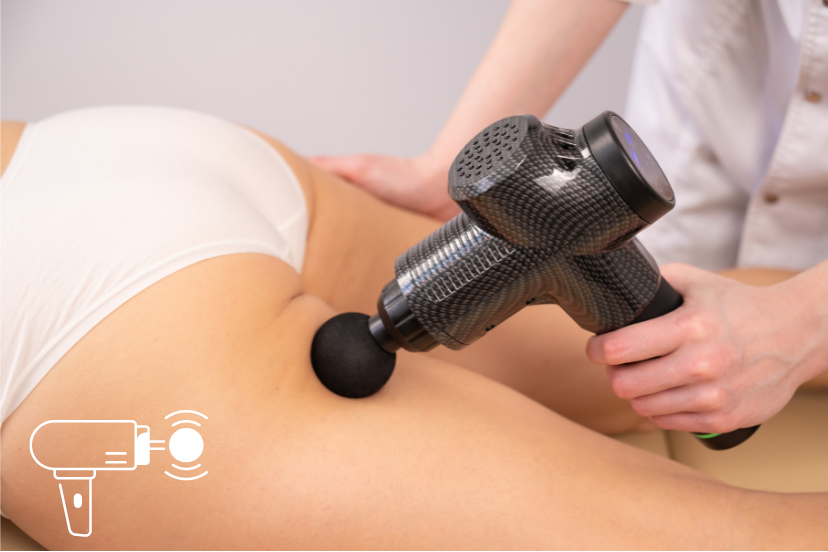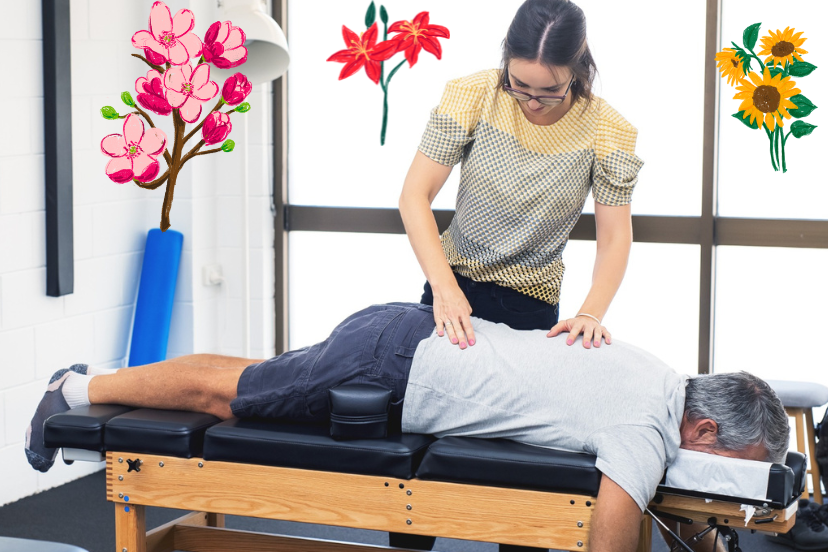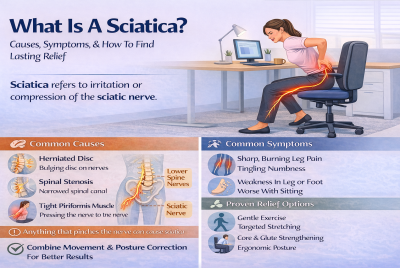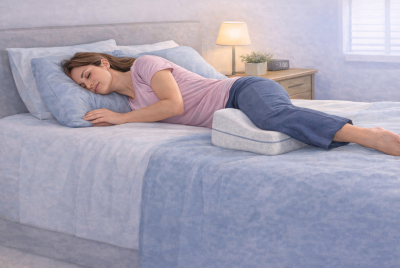Massage For Sciatica
Discover the benefits of massage for sciatica. Explore expert techniques and tools to alleviate pain and improve mobility. Dive in now! Learn targeted techniques, explore the best massagers, and find out how to relieve nerve pain effectively. Unlock a non-invasive path to comfort today! Why use massage for sciatica pain? Here are some helpful suggestions and reasons for using massage therapy as a complementary treatment for sciatica. In this article, we will explore what sciatica is, its causes and symptoms, the importance of massage in managing sciatica, different types of massage techniques, best practices, precautions, and other alternative therapies that can provide relief. Let’s dive in!
What Is Sciatica?
Sciatica is the pain that radiates along the sciatic nerve, which is the longest nerve in the human body. It typically starts in the lower back and extends down one leg, often reaching the foot. Sciatica is usually caused by a herniated disc, spinal stenosis, or any condition that compresses or irritates the sciatic nerve.
Causes Of Sciatica
Sciatica can be caused by various factors such as herniated discs, bone spurs, spinal stenosis, muscle spasms, and even pregnancy. Injuries, poor posture, and certain medical conditions like diabetes or obesity can also contribute to the development of sciatica.
Symptoms Of Sciatica
The most common symptom of sciatica is a sharp, shooting pain that travels from the lower back to the leg. Other symptoms may include tingling sensations, numbness, muscle weakness, and difficulty in moving the affected leg or foot. These symptoms can range from mild to severe and may worsen with prolonged sitting, coughing, or sneezing.
Diagnosing Sciatica
Diagnosing sciatica involves thoroughly examining medical history, physical examination, and possibly diagnostic imaging tests such as X-rays, MRI scans, or CT scans. It’s essential to consult with a healthcare professional for an accurate diagnosis and appropriate treatment plan.
Massage For Sciatica Nerve
Sciatica nerve pain can be intensely uncomfortable, but a targeted massage can offer relief. First, the therapist identifies the pain’s origin in the lower back or hip area. Then, using techniques like deep tissue massage and trigger point therapy, the masseuse relaxes the tight muscles compressing the sciatic nerve. Gliding strokes and deep kneading help increase blood circulation and reduce inflammation. The therapist may also focus on the hamstrings and calves to alleviate tension all along the nerve pathway. This specialized massage can significantly lessen sciatic pain, improve mobility, and offer a non-invasive option for those seeking relief.
Massage Video For Sciatica
Massage For Sciatica Pain Importance
Therapy like massage can significantly manage sciatica by reducing pain, improving flexibility, and promoting overall relaxation. It also helps to relieve muscle tension, release endorphins, increase blood circulation, and decrease inflammation around the affected area.
Benefits Of Massage For Sciatica
- Pain Relief: Massage helps to alleviate the pain associated with sciatica by targeting the affected muscles and releasing tension.
- Improved Flexibility: Regular massage sessions can improve flexibility and range of motion, reducing the strain on the sciatic nerve.
- Stress Reduction: Massage therapy promotes relaxation, reduces stress levels, and enhances the overall well-being of individuals with sciatica.
- Improved Blood Circulation: Proper blood flow is vital for healing and recovery. Massage increases blood circulation, delivering essential nutrients and oxygen to the affected area.
- Natural Endorphin Release: Massage triggers the release of endorphins, which are the body’s natural painkillers, providing relief from sciatica discomfort.
Types Of Massage For Sciatica
Various massage techniques can be beneficial for individuals with sciatica. Here are some common types:
Swedish Massage
Swedish massage involves long, flowing strokes, kneading, and circular movements. It aims to relax the entire body, relieve muscle tension, and improve circulation.
Deep Tissue Massage
Deep tissue massage targets deeper layers of muscles and connective tissues to alleviate chronic muscle tension and pain. This technique can help reduce inflammation and release tight muscles contributing to sciatic nerve compression.
Trigger Point Therapy
Trigger point therapy focuses on specific trigger points or knots in muscles that may be causing pain. The therapist can release tension and provide relief by applying pressure to these points.
Shiatsu Massage
Shiatsu massage originates from traditional Japanese medicine and uses finger pressure on specific body points to stimulate energy flow and promote healing. It can be effective in reducing sciatic pain and improving overall well-being.
Is Massage Good For Sciatica?
Massage can be highly beneficial for sciatica. It targets the muscles that compress the sciatic nerve, such as the lower back and piriformis muscles. Techniques like deep tissue massage and trigger point therapy can relieve this pressure. Massage also increases blood circulation to the affected area, promoting healing and reducing inflammation. Additionally, it can help release endorphins, which act as natural painkillers. Many people experience improved mobility and reduced pain after a targeted sciatica massage. However, it’s crucial to consult a healthcare provider for a proper diagnosis and treatment plan tailored to your specific needs.
Is Massage Good For Sciatica Flare-Up?
Massage can be effective for a sciatica flare-up. It targets and relaxes the muscle groups that may be compressing the sciatic nerve, such as the lower back, piriformis, and hamstring muscles. Deep tissue massage and trigger point therapy can alleviate tension and promote healing. Increased blood flow from the massage helps reduce inflammation and pain. The release of endorphins, natural painkillers, also contributes to pain relief. However, it’s essential to consult a healthcare provider for a correct diagnosis and ensure that massage is appropriate for your specific condition.
Best Practices For Massage
When considering massage therapy for sciatica, keep the following best practices in mind:
- Consult A Healthcare Professional: Before starting any new treatment, consult your healthcare provider to ensure massage suits your condition.
- Choose A Qualified Massage Therapist: Look for a licensed and experienced massage therapist specializing in treating sciatica.
- Communicate Your Symptoms: Provide detailed information about your symptoms and medical history to the therapist, allowing them to tailor the massage to your needs.
- Consistency Is Critical: Regular sessions provide the best results. Discuss with your therapist how often you should receive massages to manage your sciatica effectively.
Precautions And Considerations
While massage therapy can be highly beneficial, certain precautions should be taken:
- Avoid Deep Pressure: Deep tissue massage may not be suitable for everyone. If you have acute pain or inflammation, opt for gentler techniques.
- Inform The Therapist: If you experience discomfort or pain during the massage, immediately communicate with your therapist. They can adjust the pressure or technique accordingly.
- Follow Your Therapist’s Advice: Your therapist may provide additional recommendations for self-care, stretches, or exercises to complement the massage therapy. Incorporate these suggestions into your routine for optimal results.
Self Massage For Sciatica
First, to self-massage for sciatica relief, locate the painful area, usually around the lower back or hip. Sit or lie in a comfortable position. Use your knuckles or a tennis ball to apply firm pressure on the tight muscles. Move in circular motions for about 30 seconds to a minute. Work your way down to the hamstring and calf muscles, applying the same circular motions. Incorporate stretching by pulling your knee toward the opposite shoulder gently. Regularly practicing this routine can relieve muscle tension, improve blood circulation, and lessen the pain associated with sciatica.
Self-Massage Techniques
In addition to professional massages, there are self-massage techniques that can provide relief for sciatica. Here are a few methods you can try:
- Foam Rolling: Gently roll the foam roller along the affected area, applying gentle pressure to release muscle tension.
- Self-Trigger Point Release: Use your fingers or a tennis ball to apply pressure on trigger points in the affected muscles. Move in small circles to release tension gradually.
- Heat Therapy: Apply a heating pad or warm towel to the lower back to relax muscles and alleviate pain.
Where To Massage For Sciatica?
For sciatica relief, target specific areas during the massage. Start by massaging the lower back and the gluteal muscles, where the sciatic nerve often gets compressed. Apply pressure using your thumb or a massage tool to work on knots and tight spots. Move on to the piriformis muscle, located deep in the buttocks, as it can irritate the nerve when tense. Continue down to the hamstring and the calf muscles as the nerve runs through these areas. Techniques like deep kneading and circular motions stimulate blood flow and reduce muscle tension. Focusing on these critical areas can significantly alleviate sciatica symptoms.
Where Do You Massage A Pinched Sciatic Nerve?
To address a pinched sciatic nerve, focus the massage on the lower back, piriformis muscle, and hamstring area. These are common sites where nerve compression occurs. Apply firm pressure using your thumb or a massage tool, utilizing techniques like deep tissue massage or trigger point therapy. Work on releasing knots and tension in these specific muscle groups. This targeted approach aims to relieve the compression, improve blood circulation, and alleviate pain associated with a pinched sciatic nerve.
Massager For Sciatica
A specialized massager for sciatica can provide targeted relief. Handheld massagers with different attachment heads can work effectively on the lower back, piriformis, and hamstring muscles. Percussion massagers offer deep-tissue stimulation, helping to relax tense muscles that compress the sciatic nerve. Some people prefer electronic pulse massagers that use electrical impulses to stimulate the muscles and nerves, increasing blood flow and reducing pain. When placed on the lower back or buttock area, shiatsu massage cushions with heat functions can also offer relief. Always consult a healthcare provider to ensure that using a massager is appropriate for your sciatica condition.
Is Vibration Massage Good For Sciatica?
Vibration massage can relieve sciatica symptoms by stimulating blood flow and relaxing muscle tension. The vibrating action helps to loosen tight muscles that may be compressing the sciatic nerve, such as those in the lower back and buttocks. Increased circulation can aid in reducing inflammation and promoting healing. However, the effectiveness of vibration massage for sciatica can vary from person to person. It’s essential to consult a healthcare provider for a proper diagnosis and to determine if vibration massage is a suitable treatment option for your specific condition.
What Is The Best Massager For Sciatica Pain?
The best massager for sciatica pain varies based on individual needs, but several types stand out. Handheld percussion massagers offer targeted deep-tissue stimulation, focusing on tense muscles around the lower back and piriformis that often compress the sciatic nerve. Shiatsu massage cushions with heat functions can be placed on the lower back or buttocks for continuous relief. Electronic pulse massagers, also known as TENS units, use electrical impulses to stimulate nerves and muscles, improving blood flow and reducing pain. Always consult a healthcare provider to identify the most appropriate massager for your specific condition and to ensure it complements your treatment plan.
Massage Gun For Sciatica

Is A Massage Gun Good For Sciatica?
A massage gun can effectively treat sciatica pain by delivering targeted percussive therapy to tight muscles. The rapid pulsing action penetrates deep into the muscle tissue, especially in the lower back and piriformis areas where the sciatic nerve is often pinched. This deep stimulation helps to break up muscle knots, increase blood circulation, and relieve nerve compression. However, use the massage gun carefully, avoiding direct contact with bones or the nerve itself. Always consult a healthcare provider to confirm that a massage gun is a suitable treatment option for your sciatic condition.
Seeking Professional Help
While self-massage techniques can be helpful, seeking professional help is crucial if your sciatica symptoms persist or worsen. A licensed physical therapist or massage therapist can assess your condition and provide tailored treatments to address the underlying causes of your sciatica.
Lifestyle Changes
In addition to massage therapy, specific lifestyle changes can support the management of sciatica:
- Maintain Good Posture: Practice proper posture when sitting, standing, or lifting objects to reduce strain on your lower back.
- Stay Active: Regular exercise and stretching routines strengthen the core muscles and improve flexibility. Low-impact activities like swimming, walking, and yoga can be beneficial.
- Weight Management: Maintaining a healthy weight reduces stress on your spine and lower back muscles.
Exercise And Stretching
Specific exercises and stretching routines can help alleviate sciatic pain and prevent further discomfort. Consult with a healthcare professional or a qualified physical therapist for exercises that target your specific condition.
Alternative Therapies
Apart from massage therapy, several alternative treatments may relieve sciatica symptoms. These include cupping, acupuncture, chiropractic adjustments, herbal remedies, and transcutaneous electrical nerve stimulation (TENS). Discuss these options with your healthcare provider to determine if they are suitable for you.
Can Massage Make Sciatica Worse
While massage often helps relieve sciatica symptoms, it has the potential to make the condition worse in some cases. If the therapist applies too much pressure or targets the wrong areas, it could exacerbate nerve compression or irritation. If not performed correctly, deep-tissue massage techniques might also increase inflammation. Additionally, underlying conditions like disc herniation could negatively affect specific massage treatments. Therefore, it’s crucial to consult a healthcare provider for a proper diagnosis before undergoing any massage therapy. A skilled therapist familiar with treating sciatica can offer the most benefit without causing further harm.
Frequently Asked Questions (FAQs)
Can massage thoroughly cure sciatica?
This therapy cannot cure sciatica but can help manage the symptoms and provide relief by reducing muscle tension and promoting relaxation.
How long do the effects of a massage for sciatica last?
The duration of relief can vary depending on the individual and the severity of their sciatica. Some people may experience immediate relief, while others may require regular sessions for longer-lasting effects.
Is massage therapy safe for pregnant women with sciatica?
Massage therapy can be safe and beneficial for pregnant women with sciatica. However, it’s crucial to consult with a massage therapist experienced in prenatal massage to ensure the techniques are appropriate for pregnancy.
Is it OK to massage sciatica pain?
Massaging can alleviate sciatica pain by relaxing muscles that compress the sciatic nerve. Techniques like deep tissue massage improve blood circulation and reduce inflammation. However, consult a healthcare provider to ensure massage suits your specific condition.
What pressure point helps sciatica?
The GB30 pressure point, located deep in the buttocks near the hip joint, often helps with sciatica relief. Applying firm, steady pressure to this point can alleviate muscle tension and reduce nerve compression, relieving sciatic pain.
Extra FAQs Related To Massage For Sciatica
How to massage sciatica trigger points?
Identify the trigger points in the lower back, piriformis, and hamstrings. Apply firm, steady pressure using your thumb or a massage tool. Hold for 30-60 seconds, allowing the tight knot to release. Repeat as needed to alleviate tension and relieve sciatic pain.
Are there any side effects of massage for sciatica?
Most individuals experience no or minimal side effects from massage for sciatica. However, some may experience temporary soreness or mild bruising. It’s important to communicate any discomfort to your therapist during the session.
Can I combine massage therapy with other treatments for sciatica?
Massage therapy can be combined with other treatments such as physical therapy, medication, or chiropractic care. Discuss with your healthcare provider to create a comprehensive treatment plan tailored to your needs.
Conclusion
Massage therapy is a valuable complementary treatment for managing sciatica pain, and it can help individuals with sciatica experience improved comfort and well-being through its pain-relieving, muscle-relaxing, and stress-reducing benefits. Remember to consult with a healthcare professional, choose a qualified massage therapist, and follow the best practices and precautions mentioned to optimize the benefits of massage therapy for sciatica.
Disclaimer
Please note that this article should not replace professional medical advice. Consult a healthcare professional for an accurate diagnosis and tailored treatment plan.
👉 Explore more:




